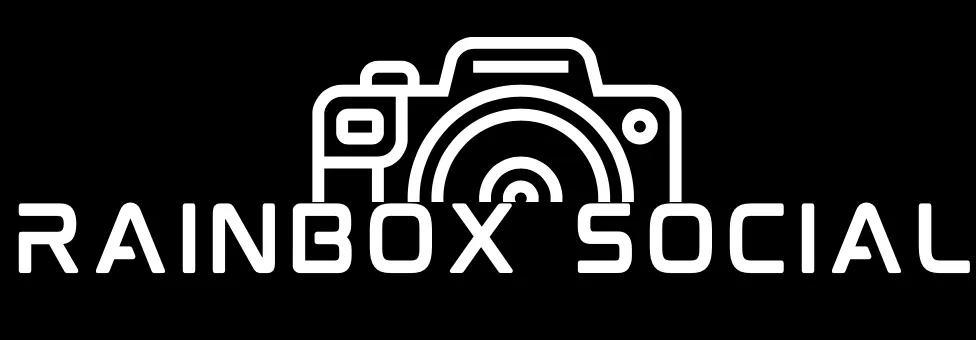

Follow Up Like a Pro: Emails That Get Replies!
Hello, I’m Linda Cox, and if you’re like me, nestled in the bustling world of real estate, you know that follow-up emails are the bridge between a good conversation and a closed deal. Over the years, I've learned that mastering the follow-up email is not just about reminding your clients you exist—it's about continuing the conversation in a way that adds value and urgency.
Email marketing is not dead! In fact, yesterday, I attended a webinar with Neil Patel, a digital marketing guru, and they explicity discussed how much email marketing is viable. Their research concluded that for every $1 spent in email marketing in 2023, $36 was returned. That is an amazing ROI if you ask me!
Quick Scan
Why Follow-Up: The importance of engagement and conversion.
Perfect Timing: When to send these crucial emails.
Personal Touch: Making each email feel custom-tailored.
Essential Elements: Components of a successful follow-up.
Email Templates: Ready-to-use examples for every situation.
Best Practices: Enhancing email effectiveness.
Common Pitfalls: What to avoid.
Understanding the Role of Follow-Up Emails
Think about the last time you went shopping, left without buying, and the store clerk called you the next day. That call might just be why you went back. Emails act much the same way. They remind your clients that you’re there, ready to help them find their dream home. According to Salesforce, it takes 6 to 8 touches to generate a viable sales lead, and your follow-up email might just be the touch that leads to a conversion (Salesforce).

Timing Your Follow-Ups
Timing can be tricky, but here's the rule of thumb I swear by: the 24-48 hour rule. Send your follow-up email within this window. Why? Because you’re still fresh in their minds. Wait too long, and you become just another business card buried in a wallet.
If you are sending text SMS messages or responses, I highly recommend responding even quicker than the 24-48 hour email window. Texters like immediate gratification. You can automate your text messages for quick replies.
Personalization is Key
No one likes to feel like one of many, especially in real estate. Personalization doesn’t mean just inserting a name at the top of the email—it means tailoring the content to reflect the client's specific interests and the details they’ve shared with you. Mention the garden they admired, or the kitchen they loved. Just inserting one personalized sentence can make all the difference. This shows you listen, and listening is how you win clients.
Components of a Successful Follow-Up Email
Let’s break down what makes a follow-up email work:
Greeting and Personal Connection: Always start with a personal greeting. It sets the tone.
Content Body: Recap your last interaction and add new information that can entice them further.
Clear Call to Action: Always end with a clear, easy-to-follow action step.
Sign-Off: Be friendly, and always invite them to reach out with questions.
Five Engaging Follow-Up Email Templates: Feel Free to Mix-Up Subject Captions, Bodies, and Closings
Template 1: Post-Open House Follow-Up
Subject: We Loved Showing You [Property Address]!
Body: Hi [Name],
Thank you for joining us at [Property Address]. Remember how you mentioned loving the kitchen island? Imagine hosting your next dinner party there! Could Thursday work for a second look?
Looking forward to your response,
[Your Name]
[Contact Information]
Template 2: Inquiry Response
Subject: More Info on [Property Address] You Asked About!
Body: Hello [Name],
I’m glad you reached out with your questions about [specific question]. Let’s schedule a call to dive deeper into the details. How does your Wednesday look?
Warmest Regards,
[Your Name]
[Contact Information]
Template 3: Post-Viewing Feedback Request
Subject: Your Thoughts on [Property Address]?
Body: Hi [Name],
It was great showing you [Property Address] the other day! What did you think? Any particular features you loved or wanted more info on? Feedback helps us help you better!
Let me know your thoughts or if there’s another listing you want to explore. I’m here to help every step of the way.
Best,
[Your Name]
[Contact Information]
Template 4: Check-In Email for Long-Term Prospects
Subject: Still Thinking About Your Dream Home?
Body: Hello [Name],
It’s been a while since we last touched base. Are you still looking for homes in [Area]? I’ve got some new listings that might just hit the mark!
All the Best,
[Your Name]
[Contact Information]
Template 5: Final Opportunity Email Subject: Last Chance to Make [Property Address] Yours!
Body: Hi [Name],
I wanted to let you know that we’re receiving offers for [Property Address] this week. There’s still a chance to make it yours. Let’s chat before it’s too late!
Looking forward to your response,
[Your Name]
[Contact Information]
Best Practices for Email Follow-Ups
Remember to keep your subject lines engaging and your messages concise. Emails that are too long lose their potency. Tools like Mailchimp or HubSpot can help track which emails perform best, so you can refine your approach over time.
Common Mistakes to Avoid
Don’t just talk at your clients; talk to them. Think of your writing as having a conversation. Avoid generic messages that don’t relate directly to their needs or the conversation you had. And whatever you do, don’t forget to follow up. It’s a simple step, but skipping it could cost you a client.
FAQs
What is the optimal length for a follow-up email? Keep it under 200 words to ensure it's read. I use word counter tools all the time.
How can I enhance my email open rates? Personalized subject lines are key. Try to catch their interest without sounding spammy.
Is it better to call or email for a follow-up? Email first. It gives them space to think and respond on their terms.
Should I include property photos in my emails? Yes, image visuals can boost engagement significantly and short videos are even better!
Can I automate my follow-up emails? Automation is great, but ensure each message is personalized to the recipient’s interests.
How often should I follow up if there is no response? Follow up twice over two weeks before pausing. Persistence is good; pestering is not.
What should I avoid in my follow-up emails? Avoid overly aggressive sales pitches and too much information in one go.
How do I know if my follow-up strategy is effective? Track your response and conversion rates. Low rates may indicate a need for strategy adjustment.
Do follow-up emails really increase conversion rates? Absolutely. They keep the conversation going and show your persistence and interest.
What is the best way to end a follow-up email? With a clear call to action and an invitation to contact you with any questions or comments.
Conclusion: The Power of Masterful Follow-Ups in Real Estate
Crafting follow-up emails in real estate isn't just a routine task; it's a critical strategy that can dramatically increase your client engagement and deal closures. A well-executed follow-up can be the difference between a forgotten interaction and a fruitful relationship. In fact, research by Invesp shows that nurturing leads with personalized follow-ups can increase sales opportunities by over 20%. This isn't just about staying in touch; it's about being strategic, timely, and relevant, which in turn nurtures trust and reliability (Invesp).
Using the strategies and simplistic, short templates provided, you can transform your standard follow-ups into compelling, persuasive communications that resonate deeply with potential buyers. Remember, each email is an opportunity to reinforce your expertise and attentiveness, qualities that buyers value highly when choosing a realtor.
But don't just take my word for it. Put these tactics to the test. Monitor your open rates, track your engagement, and tweak your approach based on what the data tells you. As you refine your follow-up emails, you'll likely see not just more responses, but more enthusiastic responses, leading to more viewings, more offers, and ultimately, more sales.
So, embrace the art of the follow-up. Be bold, be empathetic, and above all, be persistent. A thoughtful follow-up today could mean a closed deal tomorrow. Happy emailing, and here’s to turning those leads into home keys!